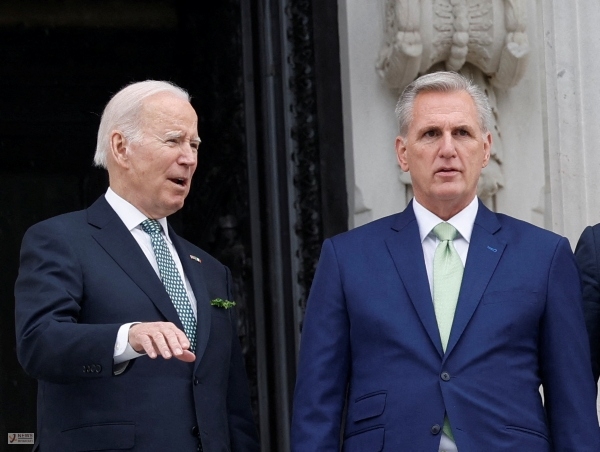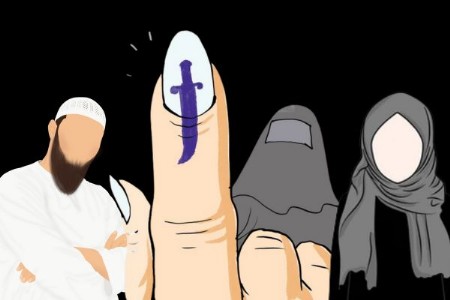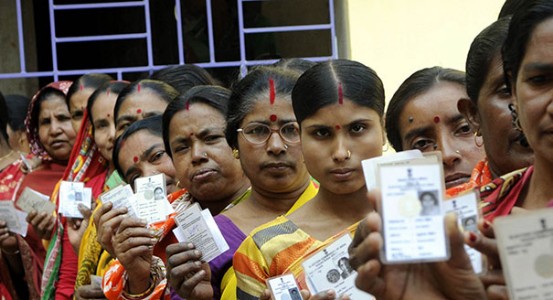Mid-course correction is what the good doctor prescribed!
Even if US revises debt ceiling of $ 31.4 trillion, its risk ridden economy may precipitate a larger global crisis of larger magnitude.
Total Views | 73
Looming debt crisis in United States with potential to default, showdown between Republicans that control the House and Democratic White House may not augur well for the global economy and developing countries like India.

Owing to unsustainable economic policies over few decades and irresponsible handling of resources has led the largest global economic powerhouse into a big mess of its own making. Even if President Joe Biden manages to clinch a last minute deal with Republican top leadership to push up the debt ceiling beyond US $ 31.4 trillion, larger questions continue to haunt the Americans. Mobilizing loans through US bonds or debt paper may not be the immediate concern but potential default on June 1 is what may turn catastrophic to not only Americans but the entire world. For Americans, it means that Democrats will not be able fund their fancied social security payments on medical and health insurance, pension or social development projects. President Biden and his Democratic administration will have to put on hold all fancy projects like waiving students’ loans or fees to providing personal tax concessions to youngsters and new taxpayers.
Also Read: Pakistan flounders, Sri Lanka enlist allies
Democrats understand the full importance of lifting the already unsustainable debt limit of $ 31.4 trillion. In fact, this also explains US President Biden’s decision to forego the scheduled Quad summit in Australia and head back home after G-7 leaders meeting in Hiroshima. Eventually, the Quad summit had to be called off with heads of US, Australia, Japan and India meeting briefly at Hiroshima on side lines of G-7 congregation. The larger issue that confronts US and the world is a wee bit different and difficult. There’s every possibility of US moving into economic recession thereby stymieing demand for goods and services globally. This will hit the economic growth sentiment internationally big time. Secondly, possibility of banks getting stuck with worthless dollar denominated bonds or debt paper in medium term cannot be ruled out unless both Federal Reserve and political leadership in US takes recourse to mid-course correction that involves massive spending cuts or improve the country’s revenues. Such a policy may be very unattractive for Democratic voters when they have to elect their President in 2024. Thirdly, to contain the contagion effect of US economy moving into abyss will be a herculean task. One cannot easily forget the global financial crisis triggered by real estate linked mortgages that turned worthless in 2007-08. This US housing bubble stirred a perfect storm to impact both large developing countries like India as well as least developed countries alike. Excessive risk exposure taken by banks was the biggest element in this crisis of the worst kind after great depression of 1929. Fourthly, if the US default finally happens, then countries like India having huge exposure to American green back will also face the heat. Thankfully enough, conscious diversification in her currency basket over last decade may limit the adverse impact on India. But, this diversification should go whole hog and consciously lead to pursuing ‘de-dollarization of Indian economy’ as a state policy.
Fifthly, while exports to US become attractive and import bills get squeezed, demand slump globally will negate the advantages gained in trade deals. There’s no reason why India should not pursue a more independent trade and currency policy keeping herself at a safe distance from the Federal Reserve and recalibrate her linkages with Washington DC. Sixthly, Democrats and Republicans must work towards mid-course correction on economic and development front rather than recklessly going for borrowing more from Tom to pay Peter. In the past, publicly available data suggests that US debt limits were revised upwards 68 times since 1960. Limiting the fresh debt limit to US $ 1.5 trillion till March 31, 2024 and achieving concomitant cuts in spending by US $ 1.47 trillion would save the perilously placed US economy. Seventhly, precipitating a perfectly cooked crisis is not in anyone’s interest and hence reining in the fresh spending to less than one per cent as per Limit, Save, Grow Act of 2023 makes eminent sense. On the parallel, limiting the mop up of fresh debt and gradual reduction in existing debt stock would augur well for US economy that’s seeking to reposition itself and instil confidence with its trading and investment partners. US Department of Treasury report of 2022 clearly outlines the course correction to be adopted for reversing unsustainability of the country’s economy where primary budget deficits have grown exponentially. Going by conservative projections made in this report, it will take about 75-years to bring the American economy back on even keel. “The debt-to-GDP ratio rises continuously in great part because primary deficits lead to higher levels of debt. The continuous rise of the debt-to-GDP ratio indicates that current fiscal policy is unsustainable” the report had cautioned.
Also Read: War on inflation must continue
The debt-to-GDP ratio was approximately 97 per cent at the end of FY 2022, and under current policy and based on this report’s assumptions is projected to reach 566 per cent in 2097, it pointed out. While pursuing a revised economy policy dispensation, President Biden should not easily forget the 2011 crisis that was triggered by US Congress. This pushed up the borrowing costs for treasury by a humungous US $ 1.3 billion in just one year. Also, US should not provide any leverage to China for en-cashing on its crisis. China is easily the largest holder of US debt paper, notes and long term bonds with valuations ranging from $ 859.4 billion to $ one trillion. China may like to leverage the US debt paper to rebalance its own resources position that again may not be looking too good. China’s own debt of US $ 14.34 trillion as of April 12, 2023 and swelling at a whopping $ 3.81 trillion annually may not be something to brag about by President Xi’s oligarchs driven communist party. Potential defaults in US, machinations in China have valuable lessons for India that’s overtly conservative on borrowings especially by the Narendra Modi government.
Bharati Web







